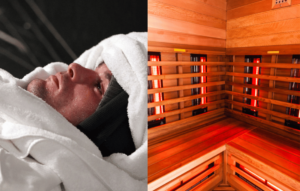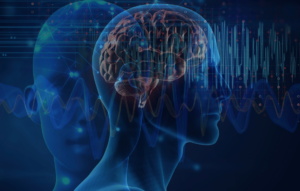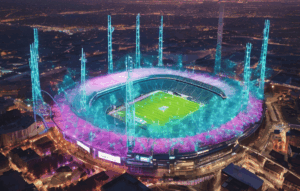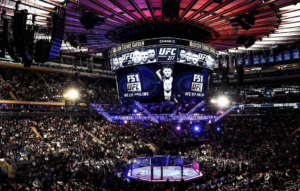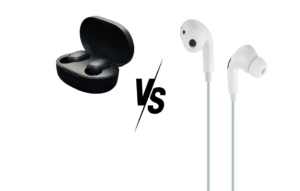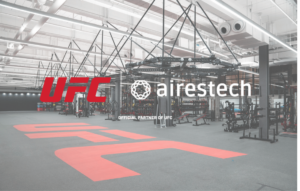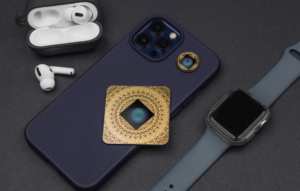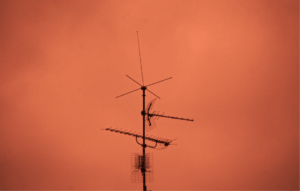Elite athletes exist in a state of constant optimization. Every heartbeat, rep, macro, and hour of sleep is tracked, tweaked, and tested. They live in a loop of training, recovery, and performance, with margins of improvement measured in milliseconds and millimeters. But beneath the obvious metrics lies a less visible threat that can sabotage every ounce of their effort—wireless radiation from 5G towers.
As wireless infrastructure continues expanding, 5G towers are appearing just feet away from homes, gyms, and stadiums. The assumption? These technologies are harmless if they don’t cause immediate heating of the tissue. The reality? That assumption is built on outdated safety standards and a refusal to acknowledge the biological chaos caused by non-thermal radiation.
Wireless Radiation Safety Standards: Built for the 90s, Not Today
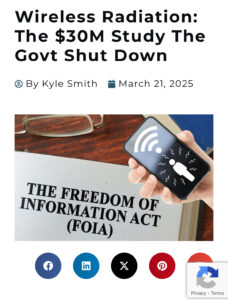
The Federal Communications Commission (FCC) established its current wireless radiation exposure limits in 1996. These limits are based solely on thermal effects, assuming the only harm EMF radiation can cause is by heating tissue. This ignores an overwhelming body of research over the past two decades that has revealed significant non-thermal biological effects.
A landmark $30 million study by the National Toxicology Program (NTP), one of the most extensive investigations of cell phone radiation, found clear evidence of DNA damage and increased tumor development in rats exposed to non-ionizing radiation. Similarly, the Ramazzini Institute in Italy conducted a long-term study exposing rats to radiation at levels lower than most people experience near cell towers, finding the same results.
5G Towers: Closer, Stronger, and Constant
Unlike previous wireless generations, 5G relies heavily on “small cell” infrastructure—shorter-range towers placed much closer together. Instead of one large cell tower every few miles, 5G requires smaller transmitters every few hundred feet. These towers are often placed on utility poles, light posts, street corners, and even directly attached to buildings, sometimes within 20 to 30 feet of bedroom windows, home offices, or athletic training centers.
The Fast-Tracked Rollout
This aggressive placement strategy was justified by the telecom industry under the guise of ensuring faster, more stable connections in high-density areas. But what it really did was eliminate public input in many cases. The rollout has been rapid, unregulated at the local level, and disturbingly opaque.
Most residents aren’t aware that towers are being installed until they appear outside their homes.
Many cities were pressured into adopting expedited 5G deployment policies, bypassing traditional zoning safeguards.
Legal challenges have increased, but the infrastructure continues expanding ahead of regulation.
Who’s Sounding the Alarm?
According to the Environmental Health Trust, this proximity means that chronic low-level exposure is unavoidable for many individuals living or training near these towers. The International Association of Fire Fighters (IAFF) has notably taken a strong stance against placing 5G towers near fire stations, citing neurological symptoms and cognitive concerns.
If it’s not safe for firefighters, should we assume it’s safe for elite athletes in the middle of crucial rest cycles?
The Biological Trade-Offs for Athletes
For athletes—whose recovery depends on:
Optimal hormone production
Deep, uninterrupted sleep
Mitochondrial efficiency
Nervous system regulation
This kind of constant EMF exposure can turn recovery into a losing battle.
Prolonged EMF exposure has been associated with:
Disrupted circadian rhythms
Elevated cortisol levels
Reduced REM and deep sleep
Greater vulnerability to oxidative stress
These aren’t minor trade-offs. They’re performance killers hiding in plain sight.
Compromised Recovery Spaces
Worse, this isn’t just about nighttime sleep. Many athletes now rely on at-home practices like:
Red light therapy
Meditation and breathwork
Stretching and mobility work
If those environments are constantly being bombarded by high-frequency radiation, the benefits of these practices could be diluted—or even reversed.
The invisible becomes intrusive when it’s everywhere. And right now, 5G is becoming everywhere.
Athlete Recovery in the Crosshairs
While EMFs often get downplayed in mainstream discussions about recovery, their biological interference with hormones, energy systems, and sleep architecture is well-documented. For high-performing athletes, these disruptions can mean the difference between consistent PRs and chronic plateaus.
EMFs and the Endocrine System
Testosterone is essential not just for performance, but for recovery, energy, and motivation. Research has shown that exposure to mobile phone radiation—another form of non-ionizing EMF—can significantly lower testosterone and sperm quality. Athletes exposed to these frequencies while sleeping, stretching, or hydrating between sessions may be silently suppressing their endocrine function.
Sleep, too, is compromised. EMF exposure disrupts melatonin production, leading to less restorative rest, increased oxidative stress, and delayed healing. For athletes who already sacrifice sleep for travel, media, or training, this creates a compounding problem.
Mitochondria and Recovery Efficiency
Mitochondria are the powerhouses of our cells, producing the ATP needed for muscle contraction and cellular repair. Studies have shown that EMFs can impair mitochondrial function, decrease ATP production, and increase reactive oxygen species (ROS), which accelerates fatigue and inflammation.
For athletes recovering from intense bouts of activity, EMF-induced mitochondrial dysfunction means slower healing, diminished endurance, and reduced gains from training.
EMFs and the Blood-Brain Barrier: An Invisible War
One of the more alarming findings in EMF research is its impact on the blood-brain barrier (BBB). A healthy BBB protects the brain from toxins, pathogens, and inflammation. However, studies have demonstrated that microwave radiation from mobile devices and towers can open the BBB, allowing harmful substances to enter the brain.
For athletes requiring fast decision-making, strong reflexes, and consistent mood regulation, this disruption could mean slower reaction times, increased anxiety, and difficulty focusing.
Lack of 5G Regulations Near Homes and Sports Facilities
There are no federal regulations that limit how close wireless radiation-emitting devices or towers can be to sports facilities.
Telecom companies can install 5G towers on utility poles or rooftops without public hearings.
Residents often discover towers only after installation, with no opportunity to weigh in.
Preemption laws in many states strip local governments of the power to regulate tower placement.
For example:
In Los Angeles, residents of Sherman Oaks and Silver Lake pushed back against new 5G towers placed directly in front of homes, only to be told that the city had limited authority due to federal preemption.
In other cities like San Diego and Sacramento, parents have protested towers installed near schools and parks, citing studies and demanding proper risk assessments.
This trend isn’t limited to neighborhoods—training centers, gyms, and sports complexes face the same risks. Towers are often placed:
Within 30 to 100 feet of athletic facilities
Near locker rooms, weight rooms, and yoga studios
Outside athlete dormitories or team housing
The result? Full-time EMF saturation in spaces meant for restoration.
Meanwhile, professional sports teams continue investing in cutting-edge recovery tools:
Red light therapy beds
Hyperbaric oxygen chambers
Cryotherapy units
But many have not yet acknowledged or mitigated the ongoing exposure to EMF radiation in these same recovery environments. Until regulatory bodies update outdated safety standards to reflect modern science and real-world exposure, athletes will remain vulnerable to chronic, invisible stress, without guidance or safeguards in place.
Data Trackers vs. Biological Recovery
Most athletes wear smartwatches, Oura Rings, chest straps, wireless headphones, and even smart clothing to track HRV, sleep cycles, strain, and real-time performance stats. But what’s often overlooked is that nearly all of these devices rely on Bluetooth, Wi-Fi, or cellular connectivity to sync and operate.
These constant signals emit low levels of radiofrequency radiation that, over time, can add up to a significant biological load, especially when stacked on top of ambient EMF exposure from 5G towers and Wi-Fi routers in homes, gyms, and stadiums.
Potential consequences of wearable tech overuse include:
Prolonged radiation exposure to vital organs, particularly from devices worn on the chest or wrist
Sleep disruption due to nighttime wear of wireless-connected trackers
Increased oxidative stress from compounded radiation signals
Delayed recovery due to subtle interference with nervous system regulation
Even wireless headphones like AirPods, often used for motivation during training or meditation sessions, emit radiation directly into the ear canal and penetrate the blood-brain barrier.
Studies have raised concerns about chronic EMF exposure in this region due to the proximity to brain tissues and the blood-brain barrier.
Athletes may unknowingly be undermining their cognitive recovery and focus while listening to music or podcasts post-training.
The irony? The very tools used to optimize performance might be slowly undermining it from the inside out.
What Athletes Can Do Right Now
It’s not all doom and 5G gloom—athletes still have agency. By becoming more intentional about where they train, how they recover, and what tech they use, they can significantly reduce their EMF load and protect their performance longevity.
Mitigation Starts with Awareness
Use EMF-protected devices: Aires devices are designed to neutralize the chaotic EMF fields around your phone, wearable, and router using microprocessor technology shown in peer-reviewed studies to reduce biological effects. Save 25% on Aires EMF protection with code “MOL”.
Sleep EMF-free: Switch your phone to airplane mode and turn off Wi-Fi at night. Use grounded outlets and EMF-blocking canopies or fabrics in sleeping quarters.
Choose wired connections for internet and entertainment in recovery areas.
Get grounded: Barefoot time outdoors helps rebalance voltage in the body and dissipates built-up EMF charge.
Limit wearable tech to essential hours—track HRV after training, not during recovery.
A Call for Better Standards and Athlete Advocacy
Athletes have the platform and power to raise awareness about unseen environmental hazards. The conversation about recovery has expanded from protein and sleep to hormones and mitochondria—it’s time to include electromagnetic hygiene.
Advocating for:
EMF-free sleep areas in athlete housing
Strategic placement of 5G towers away from gyms and training camps
Transparent health risk disclosures before towers are installed near sports complexes
could change the future of sports recovery.
Conclusion: Recovery is Electrical Too
Athletes are meticulous about fuel, sleep, hydration, and movement. But they’re electrical beings, too. Every heartbeat, muscle contraction, and neural impulse is an electrical signal. To perform at the highest level, those signals must be clear, strong, and unpolluted.
Let’s stop training for greatness in an invisible minefield.


